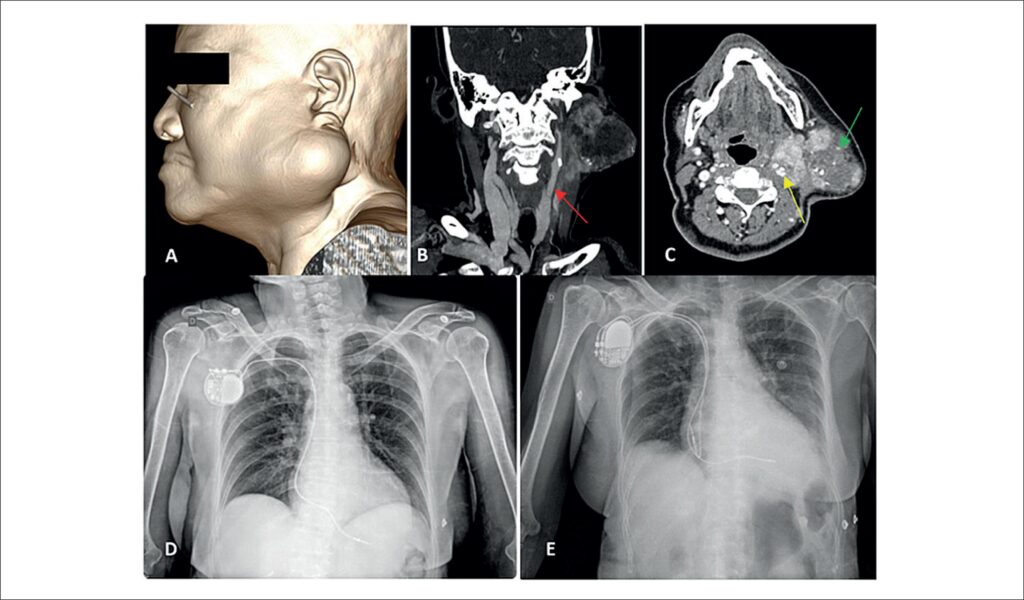Arq. Bras. Cardiol. 2024; 121(7): e20240026
Carotid Sinus Syndrome Associated with Carcinoma Ex-Pleomorphic Adenoma: What Is the Role of Artificial Cardiac Stimulation?
Introduction
Carotid sinus syndrome (CSS) is defined as syncope or pre-syncope associated with at least 3 seconds of asystole (cardioinhibitory response) and/or a drop of at least 50 mmHg in arterial systolic blood pressure (vasodepressor response) in response to stimulation of the carotid sinus. First recognized by Weiss and Baker in 1933, there have been since then reports of the association between neck masses and the occurrence of syncope. Among its causes is carcinoma ex-pleomorphic adenoma (CXAP), a rare malignant neoplasm that develops from a primary or recurrent pleomorphic adenoma. It represents 3.6% of all salivary gland neoplasms and 11.6% of all malignant neoplasms of these glands. CSS caused by neck masses is due to compression and invasion of the carotid sinus and nerve branches. This syndrome has 3 subtypes: cardioinhibitory, vasodepressor, and the mixed type. A fourth type of “cerebral response” has been previously described in the literature, in which direct compression of the carotid artery causes ipsilateral cerebral ischemia leading to seizures.
[…]
845

